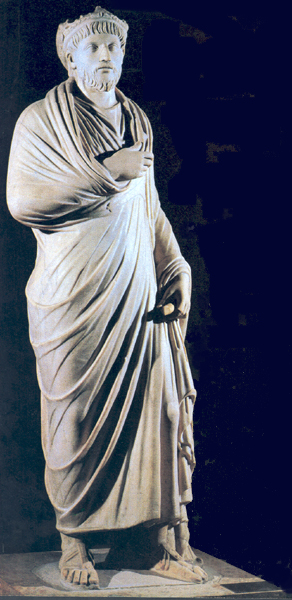
Of the Roman emperors after Constantine, only Julian (331–363) rejected Christianity in favor of the pagan gods. A nephew of Constantine, the first Christian emperor, Julian incurred the wrath of a burgeoning Christian community by deciding to rebuild the Jewish Temple in Jerusalem, which had been destroyed by Roman legions in 70 C.E.
Actually, Constantine (288–337) was not baptized—and therefore not formally converted—until he lay on his deathbed. But his spiritual conversion came earlier, before he defeated the “usurper” Maxentius at the battle of the Milvian Bridge, near Rome, in 312. Even in Constantine’s lifetime, his success in that battle was credited to a Christian vision; supposedly he ordered that the Christian monogram chi-rho (the first two letters of the Greek name for Christ) be emblazoned on the shields of his soldiers, assuring victory. In any event, Christianity became the official religion of the empire during Constantine’s reign.
When Constantine died in 337, the empire was divided among his three sons, but eventually one, Constantius, became the sole ruler. When Constantius died in 361, he was succeeded by his younger half cousin and brother-in-law, Julian, who had already achieved military glory by defeating the tribes that invaded Gaul, thus bringing a measure of tranquility to the region.
Already a library member? Log in here.
Institution user? Log in with your IP address.

